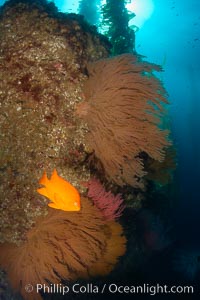
California golden gorgonian on rocky reef, below kelp forest, underwater. The golden gorgonian is a filter-feeding temperate colonial species that lives on the rocky bottom at depths between 50 to 200 feet deep. Each individual polyp is a distinct animal, together they secrete calcium that forms the structure of the colony. Gorgonians are oriented at right angles to prevailing water currents to capture plankton drifting by.
Species: California golden gorgonian, Hypsypops rubicundus, Muricea californica
Location: San Clemente Island, California
Image ID: 23589
Species: California golden gorgonian, Hypsypops rubicundus, Muricea californica
Location: San Clemente Island, California
Image ID: 23589
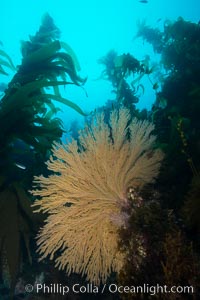
California golden gorgonian on underwater rocky reef below kelp forest, San Clemente Island. The golden gorgonian is a filter-feeding temperate colonial species that lives on the rocky bottom at depths between 50 to 200 feet deep. Each individual polyp is a distinct animal, together they secrete calcium that forms the structure of the colony. Gorgonians are oriented at right angles to prevailing water currents to capture plankton drifting by, San Clemente Island. The golden gorgonian is a filter-feeding temperate colonial species that lives on the rocky bottom at depths between 50 to 200 feet deep. Each individual polyp is a distinct animal, together they secrete calcium that forms the structure of the colony. Gorgonians are oriented at right angles to prevailing water currents to capture plankton drifting by.
Species: California golden gorgonian, Muricea californica
Location: San Clemente Island, California
Image ID: 30862
Species: California golden gorgonian, Muricea californica
Location: San Clemente Island, California
Image ID: 30862
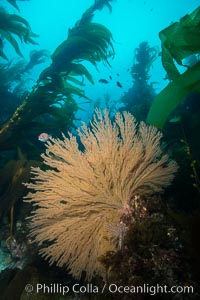
California golden gorgonian on underwater rocky reef below kelp forest, San Clemente Island. The golden gorgonian is a filter-feeding temperate colonial species that lives on the rocky bottom at depths between 50 to 200 feet deep. Each individual polyp is a distinct animal, together they secrete calcium that forms the structure of the colony. Gorgonians are oriented at right angles to prevailing water currents to capture plankton drifting by, San Clemente Island. The golden gorgonian is a filter-feeding temperate colonial species that lives on the rocky bottom at depths between 50 to 200 feet deep. Each individual polyp is a distinct animal, together they secrete calcium that forms the structure of the colony. Gorgonians are oriented at right angles to prevailing water currents to capture plankton drifting by.
Species: California golden gorgonian, Muricea californica
Location: San Clemente Island, California
Image ID: 30863
Species: California golden gorgonian, Muricea californica
Location: San Clemente Island, California
Image ID: 30863
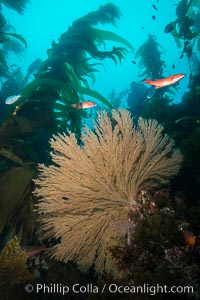
California golden gorgonian on underwater rocky reef, San Clemente Island. The golden gorgonian is a filter-feeding temperate colonial species that lives on the rocky bottom at depths between 50 to 200 feet deep. Each individual polyp is a distinct animal, together they secrete calcium that forms the structure of the colony. Gorgonians are oriented at right angles to prevailing water currents to capture plankton drifting by.
Species: California golden gorgonian, Muricea californica
Location: San Clemente Island, California
Image ID: 30865
Species: California golden gorgonian, Muricea californica
Location: San Clemente Island, California
Image ID: 30865
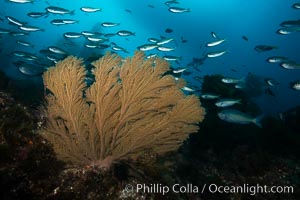
Blacksmith Chromis and California golden gorgonian on underwater rocky reef, San Clemente Island. The golden gorgonian is a filter-feeding temperate colonial species that lives on the rocky bottom at depths between 50 to 200 feet deep. Each individual polyp is a distinct animal, together they secrete calcium that forms the structure of the colony. Gorgonians are oriented at right angles to prevailing water currents to capture plankton drifting by.
Species: Blacksmith, California golden gorgonian, Chromis punctipinnis, Muricea californica
Location: San Clemente Island, California
Image ID: 30889
Species: Blacksmith, California golden gorgonian, Chromis punctipinnis, Muricea californica
Location: San Clemente Island, California
Image ID: 30889
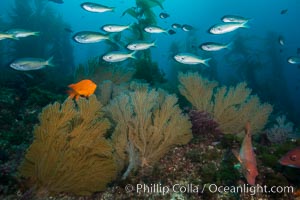
Blacksmith Chromis, Garibaldi and California golden gorgonian on underwater rocky reef, San Clemente Island. The golden gorgonian is a filter-feeding temperate colonial species that lives on the rocky bottom at depths between 50 to 200 feet deep. Each individual polyp is a distinct animal, together they secrete calcium that forms the structure of the colony. Gorgonians are oriented at right angles to prevailing water currents to capture plankton drifting by.
Species: California golden gorgonian, Garibaldi, Hypsypops rubicundus, Muricea californica
Location: San Clemente Island, California
Image ID: 30890
Species: California golden gorgonian, Garibaldi, Hypsypops rubicundus, Muricea californica
Location: San Clemente Island, California
Image ID: 30890
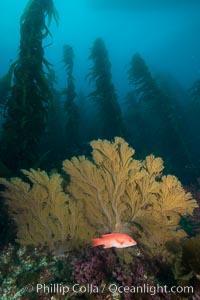
California golden gorgonian on underwater rocky reef below kelp forest, San Clemente Island. The golden gorgonian is a filter-feeding temperate colonial species that lives on the rocky bottom at depths between 50 to 200 feet deep. Each individual polyp is a distinct animal, together they secrete calcium that forms the structure of the colony. Gorgonians are oriented at right angles to prevailing water currents to capture plankton drifting by, San Clemente Island. The golden gorgonian is a filter-feeding temperate colonial species that lives on the rocky bottom at depths between 50 to 200 feet deep. Each individual polyp is a distinct animal, together they secrete calcium that forms the structure of the colony. Gorgonians are oriented at right angles to prevailing water currents to capture plankton drifting by.
Species: California golden gorgonian, Muricea californica
Location: San Clemente Island, California
Image ID: 30898
Species: California golden gorgonian, Muricea californica
Location: San Clemente Island, California
Image ID: 30898
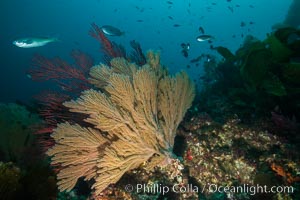
California golden gorgonian on underwater rocky reef, San Clemente Island. The golden gorgonian is a filter-feeding temperate colonial species that lives on the rocky bottom at depths between 50 to 200 feet deep. Each individual polyp is a distinct animal, together they secrete calcium that forms the structure of the colony. Gorgonians are oriented at right angles to prevailing water currents to capture plankton drifting by.
Species: California golden gorgonian, Muricea californica
Location: San Clemente Island, California
Image ID: 30899
Species: California golden gorgonian, Muricea californica
Location: San Clemente Island, California
Image ID: 30899
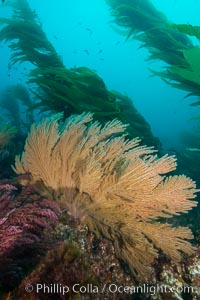
California golden gorgonian on underwater rocky reef below kelp forest, San Clemente Island. The golden gorgonian is a filter-feeding temperate colonial species that lives on the rocky bottom at depths between 50 to 200 feet deep. Each individual polyp is a distinct animal, together they secrete calcium that forms the structure of the colony. Gorgonians are oriented at right angles to prevailing water currents to capture plankton drifting by, San Clemente Island. The golden gorgonian is a filter-feeding temperate colonial species that lives on the rocky bottom at depths between 50 to 200 feet deep. Each individual polyp is a distinct animal, together they secrete calcium that forms the structure of the colony. Gorgonians are oriented at right angles to prevailing water currents to capture plankton drifting by.
Species: California golden gorgonian, Muricea californica
Location: San Clemente Island, California
Image ID: 30902
Species: California golden gorgonian, Muricea californica
Location: San Clemente Island, California
Image ID: 30902
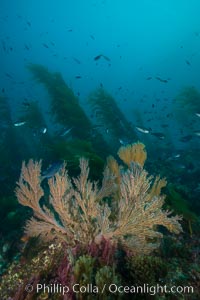
California golden gorgonian on underwater rocky reef below kelp forest, San Clemente Island. The golden gorgonian is a filter-feeding temperate colonial species that lives on the rocky bottom at depths between 50 to 200 feet deep. Each individual polyp is a distinct animal, together they secrete calcium that forms the structure of the colony. Gorgonians are oriented at right angles to prevailing water currents to capture plankton drifting by, San Clemente Island. The golden gorgonian is a filter-feeding temperate colonial species that lives on the rocky bottom at depths between 50 to 200 feet deep. Each individual polyp is a distinct animal, together they secrete calcium that forms the structure of the colony. Gorgonians are oriented at right angles to prevailing water currents to capture plankton drifting by.
Species: California golden gorgonian, Muricea californica
Location: San Clemente Island, California
Image ID: 30904
Species: California golden gorgonian, Muricea californica
Location: San Clemente Island, California
Image ID: 30904
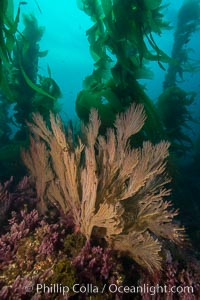
California golden gorgonian on underwater rocky reef below kelp forest, San Clemente Island. The golden gorgonian is a filter-feeding temperate colonial species that lives on the rocky bottom at depths between 50 to 200 feet deep. Each individual polyp is a distinct animal, together they secrete calcium that forms the structure of the colony. Gorgonians are oriented at right angles to prevailing water currents to capture plankton drifting by, San Clemente Island. The golden gorgonian is a filter-feeding temperate colonial species that lives on the rocky bottom at depths between 50 to 200 feet deep. Each individual polyp is a distinct animal, together they secrete calcium that forms the structure of the colony. Gorgonians are oriented at right angles to prevailing water currents to capture plankton drifting by.
Species: California golden gorgonian, Muricea californica
Location: San Clemente Island, California
Image ID: 30907
Species: California golden gorgonian, Muricea californica
Location: San Clemente Island, California
Image ID: 30907
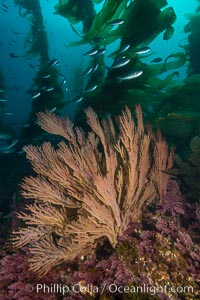
California golden gorgonian on underwater rocky reef below kelp forest, San Clemente Island. The golden gorgonian is a filter-feeding temperate colonial species that lives on the rocky bottom at depths between 50 to 200 feet deep. Each individual polyp is a distinct animal, together they secrete calcium that forms the structure of the colony. Gorgonians are oriented at right angles to prevailing water currents to capture plankton drifting by, San Clemente Island. The golden gorgonian is a filter-feeding temperate colonial species that lives on the rocky bottom at depths between 50 to 200 feet deep. Each individual polyp is a distinct animal, together they secrete calcium that forms the structure of the colony. Gorgonians are oriented at right angles to prevailing water currents to capture plankton drifting by.
Species: California golden gorgonian, Muricea californica
Location: San Clemente Island, California
Image ID: 30908
Species: California golden gorgonian, Muricea californica
Location: San Clemente Island, California
Image ID: 30908
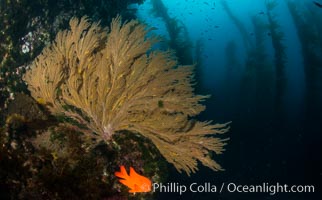
Garibaldi and California golden gorgonian on underwater rocky reef, San Clemente Island. The golden gorgonian is a filter-feeding temperate colonial species that lives on the rocky bottom at depths between 50 to 200 feet deep. Each individual polyp is a distinct animal, together they secrete calcium that forms the structure of the colony. Gorgonians are oriented at right angles to prevailing water currents to capture plankton drifting by.
Species: California golden gorgonian, Garibaldi, Hypsypops rubicundus, Muricea californica
Location: San Clemente Island, California
Image ID: 30921
Species: California golden gorgonian, Garibaldi, Hypsypops rubicundus, Muricea californica
Location: San Clemente Island, California
Image ID: 30921
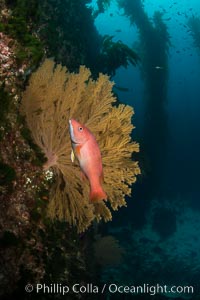
California golden gorgonian and small juvenile sheephead wrasse on rocky reef, below kelp forest, underwater. The golden gorgonian is a filter-feeding temperate colonial species that lives on the rocky bottom at depths between 50 to 200 feet deep. Each individual polyp is a distinct animal, together they secrete calcium that forms the structure of the colony. Gorgonians are oriented at right angles to prevailing water currents to capture plankton drifting by.
Species: California sheephead wrasse, Semicossyphus pulcher
Location: San Clemente Island, California
Image ID: 30924
Species: California sheephead wrasse, Semicossyphus pulcher
Location: San Clemente Island, California
Image ID: 30924
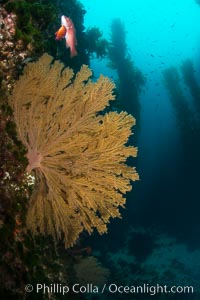
California golden gorgonian on underwater rocky reef below kelp forest, San Clemente Island. The golden gorgonian is a filter-feeding temperate colonial species that lives on the rocky bottom at depths between 50 to 200 feet deep. Each individual polyp is a distinct animal, together they secrete calcium that forms the structure of the colony. Gorgonians are oriented at right angles to prevailing water currents to capture plankton drifting by, San Clemente Island. The golden gorgonian is a filter-feeding temperate colonial species that lives on the rocky bottom at depths between 50 to 200 feet deep. Each individual polyp is a distinct animal, together they secrete calcium that forms the structure of the colony. Gorgonians are oriented at right angles to prevailing water currents to capture plankton drifting by.
Species: California golden gorgonian, Muricea californica
Location: San Clemente Island, California
Image ID: 30925
Species: California golden gorgonian, Muricea californica
Location: San Clemente Island, California
Image ID: 30925
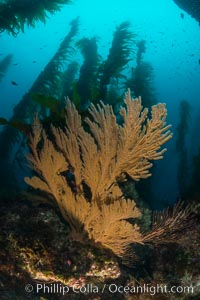
California golden gorgonian on underwater rocky reef below kelp forest, San Clemente Island. The golden gorgonian is a filter-feeding temperate colonial species that lives on the rocky bottom at depths between 50 to 200 feet deep. Each individual polyp is a distinct animal, together they secrete calcium that forms the structure of the colony. Gorgonians are oriented at right angles to prevailing water currents to capture plankton drifting by, San Clemente Island. The golden gorgonian is a filter-feeding temperate colonial species that lives on the rocky bottom at depths between 50 to 200 feet deep. Each individual polyp is a distinct animal, together they secrete calcium that forms the structure of the colony. Gorgonians are oriented at right angles to prevailing water currents to capture plankton drifting by.
Species: California golden gorgonian, Muricea californica
Location: San Clemente Island, California
Image ID: 30926
Species: California golden gorgonian, Muricea californica
Location: San Clemente Island, California
Image ID: 30926
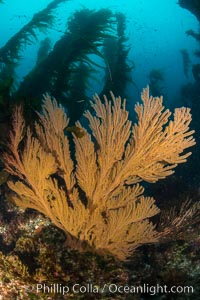
California golden gorgonian on underwater rocky reef below kelp forest, San Clemente Island. The golden gorgonian is a filter-feeding temperate colonial species that lives on the rocky bottom at depths between 50 to 200 feet deep. Each individual polyp is a distinct animal, together they secrete calcium that forms the structure of the colony. Gorgonians are oriented at right angles to prevailing water currents to capture plankton drifting by, San Clemente Island. The golden gorgonian is a filter-feeding temperate colonial species that lives on the rocky bottom at depths between 50 to 200 feet deep. Each individual polyp is a distinct animal, together they secrete calcium that forms the structure of the colony. Gorgonians are oriented at right angles to prevailing water currents to capture plankton drifting by.
Species: California golden gorgonian, Muricea californica
Location: San Clemente Island, California
Image ID: 30927
Species: California golden gorgonian, Muricea californica
Location: San Clemente Island, California
Image ID: 30927
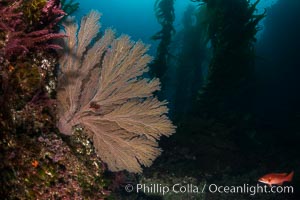
California golden gorgonian on underwater rocky reef below kelp forest, San Clemente Island. The golden gorgonian is a filter-feeding temperate colonial species that lives on the rocky bottom at depths between 50 to 200 feet deep. Each individual polyp is a distinct animal, together they secrete calcium that forms the structure of the colony. Gorgonians are oriented at right angles to prevailing water currents to capture plankton drifting by, San Clemente Island. The golden gorgonian is a filter-feeding temperate colonial species that lives on the rocky bottom at depths between 50 to 200 feet deep. Each individual polyp is a distinct animal, together they secrete calcium that forms the structure of the colony. Gorgonians are oriented at right angles to prevailing water currents to capture plankton drifting by.
Species: California golden gorgonian, Muricea californica
Location: San Clemente Island, California
Image ID: 30929
Species: California golden gorgonian, Muricea californica
Location: San Clemente Island, California
Image ID: 30929
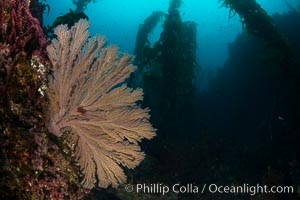
California golden gorgonian on underwater rocky reef below kelp forest, San Clemente Island. The golden gorgonian is a filter-feeding temperate colonial species that lives on the rocky bottom at depths between 50 to 200 feet deep. Each individual polyp is a distinct animal, together they secrete calcium that forms the structure of the colony. Gorgonians are oriented at right angles to prevailing water currents to capture plankton drifting by, San Clemente Island. The golden gorgonian is a filter-feeding temperate colonial species that lives on the rocky bottom at depths between 50 to 200 feet deep. Each individual polyp is a distinct animal, together they secrete calcium that forms the structure of the colony. Gorgonians are oriented at right angles to prevailing water currents to capture plankton drifting by.
Species: California golden gorgonian, Muricea californica
Location: San Clemente Island, California
Image ID: 30930
Species: California golden gorgonian, Muricea californica
Location: San Clemente Island, California
Image ID: 30930
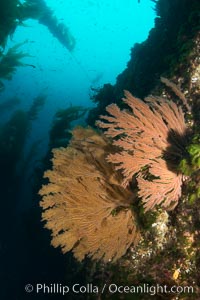
California golden gorgonian on underwater rocky reef below kelp forest, San Clemente Island. The golden gorgonian is a filter-feeding temperate colonial species that lives on the rocky bottom at depths between 50 to 200 feet deep. Each individual polyp is a distinct animal, together they secrete calcium that forms the structure of the colony. Gorgonians are oriented at right angles to prevailing water currents to capture plankton drifting by, San Clemente Island. The golden gorgonian is a filter-feeding temperate colonial species that lives on the rocky bottom at depths between 50 to 200 feet deep. Each individual polyp is a distinct animal, together they secrete calcium that forms the structure of the colony. Gorgonians are oriented at right angles to prevailing water currents to capture plankton drifting by.
Species: California golden gorgonian, Muricea californica
Location: San Clemente Island, California
Image ID: 30931
Species: California golden gorgonian, Muricea californica
Location: San Clemente Island, California
Image ID: 30931
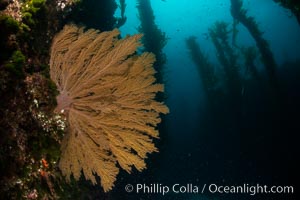
California golden gorgonian on underwater rocky reef below kelp forest, San Clemente Island. The golden gorgonian is a filter-feeding temperate colonial species that lives on the rocky bottom at depths between 50 to 200 feet deep. Each individual polyp is a distinct animal, together they secrete calcium that forms the structure of the colony. Gorgonians are oriented at right angles to prevailing water currents to capture plankton drifting by, San Clemente Island. The golden gorgonian is a filter-feeding temperate colonial species that lives on the rocky bottom at depths between 50 to 200 feet deep. Each individual polyp is a distinct animal, together they secrete calcium that forms the structure of the colony. Gorgonians are oriented at right angles to prevailing water currents to capture plankton drifting by.
Species: California golden gorgonian, Muricea californica
Location: San Clemente Island, California
Image ID: 30932
Species: California golden gorgonian, Muricea californica
Location: San Clemente Island, California
Image ID: 30932
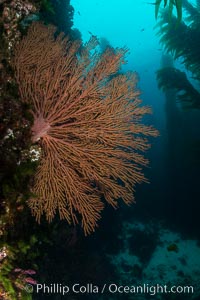
California golden gorgonian on underwater rocky reef below kelp forest, San Clemente Island. The golden gorgonian is a filter-feeding temperate colonial species that lives on the rocky bottom at depths between 50 to 200 feet deep. Each individual polyp is a distinct animal, together they secrete calcium that forms the structure of the colony. Gorgonians are oriented at right angles to prevailing water currents to capture plankton drifting by, San Clemente Island. The golden gorgonian is a filter-feeding temperate colonial species that lives on the rocky bottom at depths between 50 to 200 feet deep. Each individual polyp is a distinct animal, together they secrete calcium that forms the structure of the colony. Gorgonians are oriented at right angles to prevailing water currents to capture plankton drifting by.
Species: California golden gorgonian, Muricea californica
Location: San Clemente Island, California
Image ID: 30934
Species: California golden gorgonian, Muricea californica
Location: San Clemente Island, California
Image ID: 30934
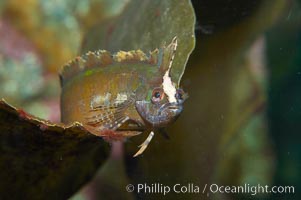
Crevice rockfish. Seldom seen, kelpfish hover among the seaweeds in wave swept tidepools and reefs. These secretive fish rapidly change color to match watever background they are near. This kelpfish has assumed the coloration of the blade of kelp it is resting on.
Species: Crevice rockfish, Gibbonsia montereyensis
Location: Monterey, California
Image ID: 13710
Species: Crevice rockfish, Gibbonsia montereyensis
Location: Monterey, California
Image ID: 13710
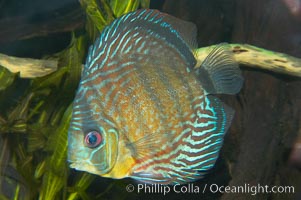
Wild discus. The female wild discuss will lay several hundred eggs and guard them until they hatch. Once they emerge, the young fish attach themselves to the sides of their parents for the first few weeks of their lives, feeding on a milky secretion produced by glands in the parents flanks.
Species: Wild discus, Symphysodon discus
Image ID: 13953
Species: Wild discus, Symphysodon discus
Image ID: 13953
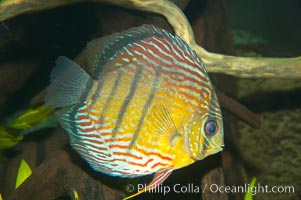
Wild discus. The female wild discuss will lay several hundred eggs and guard them until they hatch. Once they emerge, the young fish attach themselves to the sides of their parents for the first few weeks of their lives, feeding on a milky secretion produced by glands in the parents flanks.
Species: Wild discus, Symphysodon discus
Image ID: 13954
Species: Wild discus, Symphysodon discus
Image ID: 13954
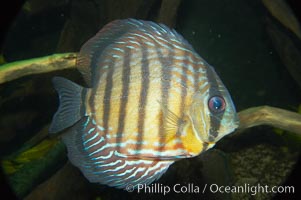
Wild discus. The female wild discuss will lay several hundred eggs and guard them until they hatch. Once they emerge, the young fish attach themselves to the sides of their parents for the first few weeks of their lives, feeding on a milky secretion produced by glands in the parents flanks.
Species: Wild discus, Symphysodon discus
Image ID: 13955
Species: Wild discus, Symphysodon discus
Image ID: 13955
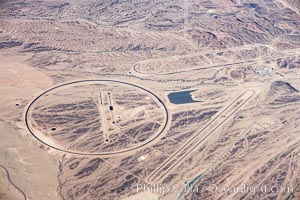
A top secret, high security alien spaceship depot in the desert east of the Colorado River. Long suspected but only confirmed to exist for the first time with this photograph, this is a derivative high tech interstellar flight complex arising from work originally conducted at the (nonexistant) Area 51. Strangely, certain curious aspects of this location, such as the circle and long oval tracks which support landings and liftoff of gravity drive Martian and Saturnian craft, are not shown on Google Earth, while other features in this photograph area such as the long ovoid skateboard track are indeed seen on Google Earth and can be matched to this image. The US Government will likely deny the mere existence of this bizarre Martian landing area.
Location: Alien Spaceship Landing Field, California
Image ID: 22130
Location: Alien Spaceship Landing Field, California
Image ID: 22130
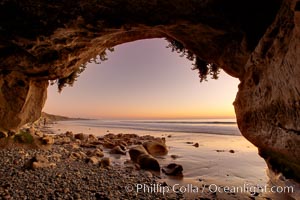
Sarah's Cavern, a natural sea cave hidden below sea cliffs in Carlsbad, opening onto a flat beach at sunset, inner walls adorned with graffiti.
Location: Carlsbad, California
Image ID: 22196
Location: Carlsbad, California
Image ID: 22196
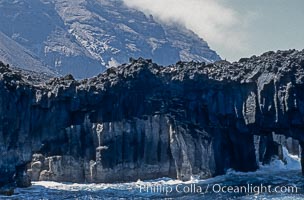
Arcos del Diablo (Devils Arches), a series of enormous volcanic arches that were originally lava tubes. Some of the arches are exposed above water (seen here) while at least one that we discovered is entirely submarine (El Secreto del Vicki). Weather side of Guadalupe Island (Isla Guadalupe).
Location: Guadalupe Island (Isla Guadalupe), Baja California, Mexico
Image ID: 09763
Location: Guadalupe Island (Isla Guadalupe), Baja California, Mexico
Image ID: 09763
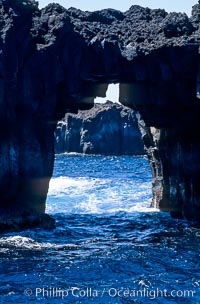
Arcos del Diablo (Devils Arches), a series of enormous volcanic arches that were originally lava tubes. Some of the arches are exposed above water (seen here) while at least one that we discovered is entirely submarine (El Secreto del Vicki). Weather side of Guadalupe Island (Isla Guadalupe).
Location: Guadalupe Island (Isla Guadalupe), Baja California, Mexico
Image ID: 09764
Location: Guadalupe Island (Isla Guadalupe), Baja California, Mexico
Image ID: 09764